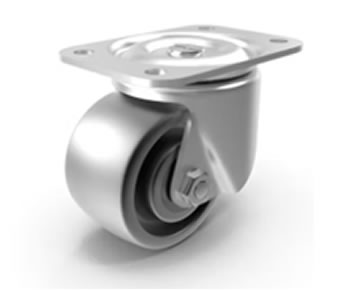Medical Casters
Casters play a vital role in the healthcare industry, where mobility, hygiene, and precision are essential. Medical equipment often relies on casters to ensure smooth movement, ease of transportation, and effective patient care. When selecting casters for medical equipment, several factors must be considered to meet strict healthcare standards and ensure optimal performance.
Types of Casters for Medical Equipment
Various types of casters are suitable for medical equipment, depending on the specific needs and environment:
- Swivel Casters: Swivel casters provide 360-degree rotation, allowing for easy maneuvering of medical carts and equipment in tight spaces.
- Locking Casters: Locking casters have a mechanism to immobilize the equipment when required, ensuring stability during procedures or while stationary.
- Antimicrobial Casters: In healthcare settings, where cleanliness is paramount, antimicrobial casters with special coatings help prevent the growth of bacteria, ensuring a hygienic environment.
- Heavy-Duty Casters: Medical equipment, such as hospital beds and diagnostic machines, often requires heavy-duty casters designed to support substantial weight loads.
Factors to Consider When Choosing Medical Equipment Casters
When selecting casters for medical equipment, consider the following factors:
- Load Capacity: Determine the weight capacity required to support the medical equipment, including any patients or accessories. Choose casters that can safely accommodate the load.
- Wheel Material: The choice of wheel material is crucial. Common options include non-marking rubber, polyurethane, and stainless steel. Ensure that the material aligns with healthcare standards and is suitable for the flooring in your facility.
- Wheel Diameter: The size of the caster wheels affects stability and maneuverability. Larger wheels are better for navigating uneven surfaces, while smaller wheels offer precise control.
- Mounting Style: Consider whether your medical equipment requires stem-mounted or plate-mounted casters, depending on the equipment's design and structure.
- Brakes and Locking Mechanisms: Depending on the application, choose casters with appropriate braking or locking mechanisms to ensure equipment stability during procedures.
Benefits of Quality Medical Equipment Casters
Investing in high-quality casters for medical equipment offers several advantages:
- Patient Comfort: Smooth-rolling casters provide comfort and ease of movement for patients in hospital beds or wheelchairs.
- Infection Control: Antimicrobial casters help maintain a hygienic environment, crucial for infection control in healthcare settings.
- Maneuverability: High-quality casters allow healthcare professionals to move equipment with precision, facilitating efficient patient care.
- Durability: Quality casters are built to withstand the rigorous demands of the healthcare industry, ensuring longevity and reliability.
Installation and Maintenance
Proper installation of medical equipment casters is essential to ensure safety and performance. Follow the manufacturer's guidelines carefully. Regular maintenance, including cleaning and lubrication, is crucial to keep the casters functioning optimally and to extend their lifespan.
Choosing the right casters for medical equipment is critical to the overall efficiency and effectiveness of healthcare facilities. Consider the unique needs of your facility and the factors mentioned above to make informed decisions when selecting casters for medical equipment.










